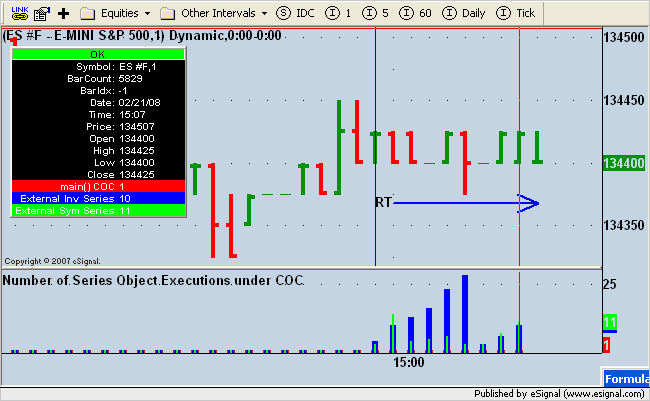If I set an EFS compute on close and in this EFS there is a builtin study called, for example
setComputeOnClose(true);
......
var volBBTopStudy = upperBB(20, 2, volume(sym(volSymbol)));
......
My question is whether volBBTopStudy is updated on every tick of volSymbol or it is only updated at the end of each bar of the primary symbol? Thanks in advance.
- Clearpicks
setComputeOnClose(true);
......
var volBBTopStudy = upperBB(20, 2, volume(sym(volSymbol)));
......
My question is whether volBBTopStudy is updated on every tick of volSymbol or it is only updated at the end of each bar of the primary symbol? Thanks in advance.
- Clearpicks

Comment